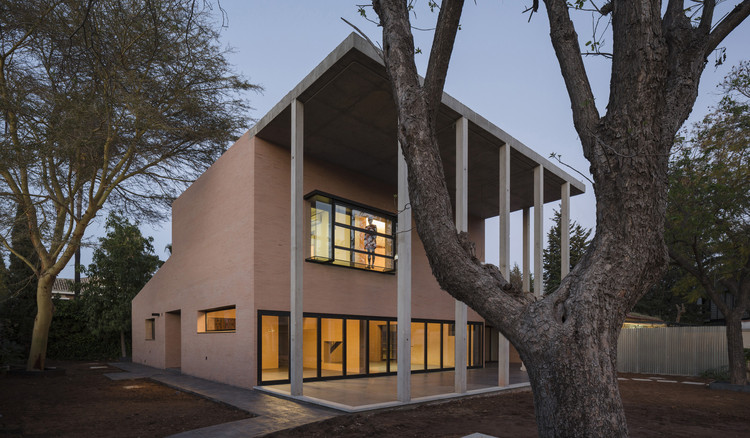
-
Architects: Canales Lombardero
- Area: 219 m²
- Year: 2016
-
Photographs:Fernando Alda
-
Manufacturers: Strugal, DANOSA, Hormigones Relosa SA, RA Cerámica, ROCKWOOL, Topox cuber SL

Text description provided by the architects. A retired couple, both doctors decide to use their life savings to build a new house in Seville for them and for their visiting kin who living in the UK. They want the house to be designed for today, but also serve the future generations to come.

Durability, solid construction, energy efficiency and the recycling of client materials are set as priorities for the construction. Flexibility for future uses is articulated through the restraints associated with these priorities and by setting a clear system of stable relations around which adaptation and change can occur. This system not only intends to organize service areas and installations, but also curates spatial relationships, structure, light, cross ventilation and energy performance, whilst allowing for its inhabitant’s to appropriate and manipulate programme over time.

In particular, the design deploys a system of brick cavity walls that articulates all domestic spatial relations, whilst the fluid and dynamic inhabitation unfolds in-between them. The walls are made of two interconnected layers of solid firebrick – leftovers from a local construction. The house is designed as a passive-structure with the help of experts in sustainability from the Architectural Association in London. The energy strategy for the design is based on the thermal inertia of the thick walls. For this reason, the brick walls and concrete slabs are left unclad to better absorb energy flows within them.


Durability of the construction is also considered relevant. Elements such as doors, toilets, faucets, were recycled from a previous home of the clients, thus anticipating not only the free incorporation of elements into the house in the near future, but also, the goal of making durable what was already in use before construction.


Finally, the design reflects the constant negotiation implied with small commissions - budget limitations, client aspirations, regulations and the dissolution between technological and artisanal solutions. A clear manifestation of this is showcased with the front façade portico. To navigate around local regulation that states that the column widths must be 25x25cm, reintroduced as 20x20cm prefabricated columns, not only does the structure mediate between local regulations, but adheres to the necessary slenderness that matches both the clients’ aspiration for a larger house with the reality of their budget and programme development - generating an ambiguous scale emerging from a technical solution that splits representation from performance.





























